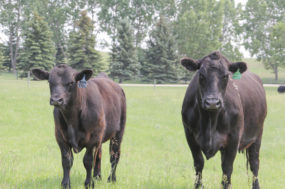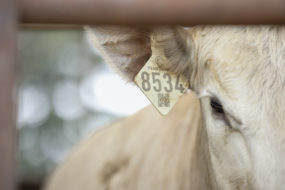The COVID-19 pandemic has evolved with sudden devastation on agriculture. In March and early April, the issue was how to properly distribute beef processed for restaurants and schools into grocers. Now the situation is more dire.
When two dozen meat-packing facilities closed in April due to worker safety issues, it plunged cattle slaughter for the first week of May down to 425,000 head, a 37% decrease now felt nationwide.
With less available capacity to process the growing number of fat cattle, the overwhelmed packing segment is pinching off beef supplies to a nation hungry for beef.
This is not a challenge that will be resolved easily or quickly. But it must be met with every available resource for producers to survive an awesome strain.
You are undoubtedly feeling every ounce of that weight. The 5-area weekly weighted average steer price was at $98 per hundredweight (cwt) on May 6, far below last year’s average price of $125.
In yet another cruel twist, the price of the weekly Choice cutout soared from $230 to $350 in a two-week span. When a Tyson Foods board chairman told America the country’s food supply is breaking, it was a jarring statement, especially for producers still looking at a healthy herd of cattle that represents years of work and sacrifice.
But, truly, the supply chain cannot survive without a functional network of processors. That won’t happen unless facilities meet sufficient standards from federal safety inspectors and local health officials. Plants must require space between workers, fewer cutters, slower processing speeds on the belt and a way to test those doing the work.
May is traditionally beef appreciation month, when grills are fired up for summer festivities. Even more painful in timing is that restaurants will soon reopen with greater dining demand as the public yearns to get out of the house.
Given the dire situation, cattle producers have two options on a way forward. One is to be prepared for the worst. Have a plan for when and how to liquidate the herd and by how much into your bottom line. Many producers are donating cattle to local butchers, processors and food banks. Beef is still the best protein option, and if it can build loyalty, it is never wasted.
Second is to say we’ve hit the worst. It’s no different than those challenging days of the past, from the 2003 BSE crisis or record drought of 2011-12. Ranchers hit hard had one fervent prayer: Each day of drought is a day closer to rain. And yes, the rains do eventually come.
In reality, you need both options. No ranchers are familiar with a pandemic, but the ranching spirit is strong enough to lean forward and ride through the storm.
Don’t let go of the reins. A nation is looking to you to lead the way, and lead you will. ![]()

-
David Cooper
- Managing Editor
- Progressive Cattle
- Email David Cooper








